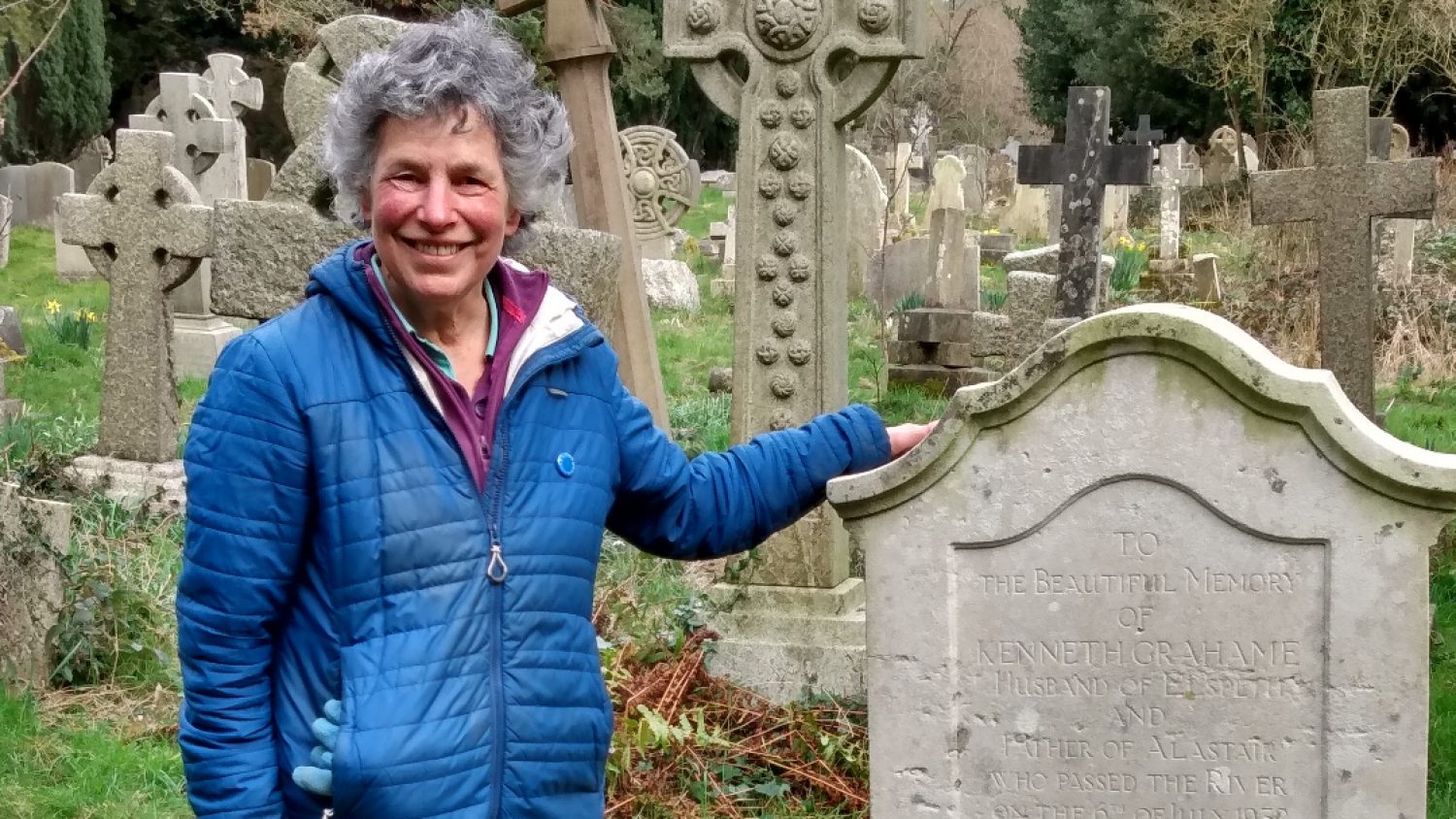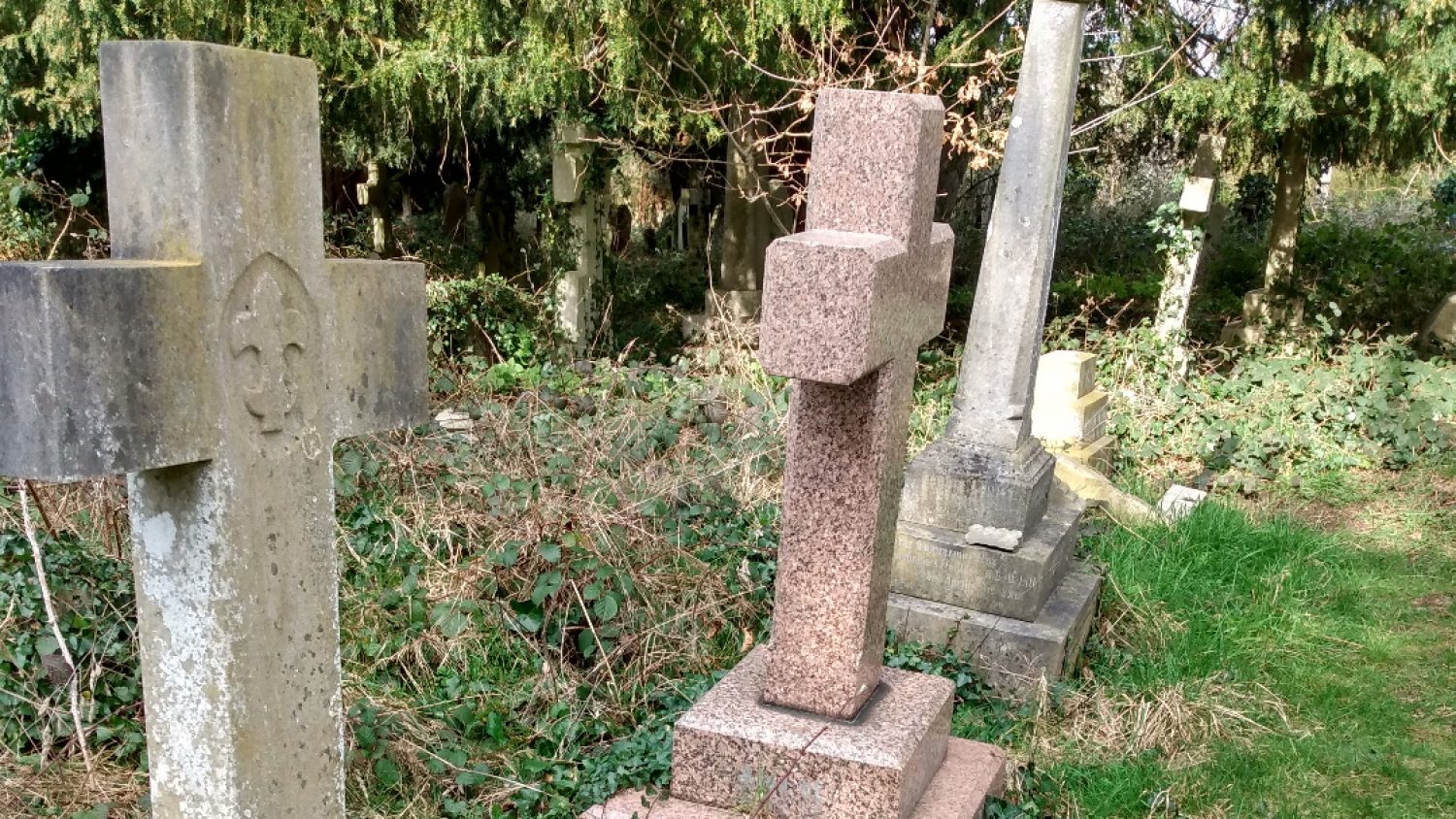Three minute read
Lambeth cemetery, where Poppy’s HQ is based, was founded during the Victorian era. The oldest graves here were dug over 160 years ago. But the story behind Victorian gravestones starts, not hundreds or thousands, but millions of years ago.
“You find a lot of marble in Victorian graveyards,” explains geologist Nina Morgan. “Carrara marble, which was shipped over from Italy, is particularly common. This is formed from limestone, calcium carbonate, like the limescale you might find in your kettle today.
“The limestone was laid down 200 million years ago and converted to marble about 15 million years ago when tectonic plates moved, smashing Africa into Europe and creating the Alps.
"Over time, the limestone was buried, heated and, when it cooled, it recrystallised to form marble. A million years is nothing to a geologist!”
Finding fossils on gravestones
Nina, together with colleague Philip Powell, organises free, guided walks in Oxfordshire graveyards, to introduce people to science in an accessible, non-threatening way.
She believes that anyone can be a gravestone geologist — once you know what you are looking for, it’s easy to start picking out different rock types, just using your eyes or a simple hand lens. You can even find fossils if you look carefully.
“You can find fossils on gravestones, depending on the type of rock they have been made from and how that rock was formed,” says Nina.
“In Oxfordshire, we have many gravestones made from Banbury ironstone, a sandy limestone formed about 190 million years ago in the Jurassic period, when the whole area was a warm, shallow sea. If you are lucky, you can find fossils of small sea creatures.”
The Victorian way of death
As well as opening our eyes to the ancient, pre-human history of our planet, gravestones also reveal a great deal about humanity’s more recent history.
“Victorian cemeteries are especially interesting — you find a real variety of gravestones, as not very well off people were buried right next to rich or famous people.
"Prior to the nineteenth century, you were more likely to see sculptures of skulls than the crosses, angels or other Christian imagery that you see on Victorian graves.
“Granite started being used during Victorian times. Before then it was too heavy to transport, but the new railway network made it possible for granite to be transported from Scotland, Cornwall or the Lake District and used all over the UK for the first time.”
Cemeteries are living places
Nina was inspired by the geologist Eric Robinson, now retired from University College London, to take up gravestone geology: “Eric was well known for turning up at geological conferences and taking people off on tours of the local cemetery.
"He sent me a lot of his papers about graveyards in Oxford when he was clearing out his office, and that’s how I got involved in this area of study.
“I hear messages in the media all the time which say that science is too hard for people to understand. That feels very wrong to me — there are so many ways we can use geology to get people into science.”
Her research has also changed Nina’s attitude to cemeteries themselves. “As a child, I used to be frightened of cemeteries and thought they were sad places. This work has changed my view, I now love spending time in cemeteries and find them very peaceful. They are not just places of mourning, they are places of interest.
“Cemeteries provide a way of learning and remembering our history. They are living places, where you can find lichens, wildflowers and insects. Above all, they are a geological treasure trove. Once you start looking, you’ll never see cemeteries in the same way again.”
Find out more about gravestone geology and watch a short introductory video.
Read our guide to choosing a memorial stone or discover whether we should be reusing graves.
To stay in touch with all the latest news and updates from Poppy's by email, sign up here or contact us if you need help planning a funeral.


